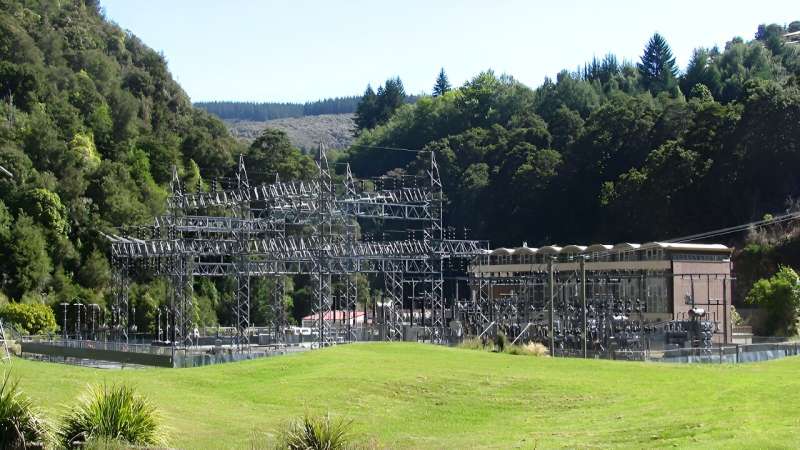This article has been reviewed according to Science X's editorial process and policies. Editors have highlighted the following attributes while ensuring the content's credibility:
fact-checked
peer-reviewed publication
trusted source
proofread
Protecting power grids from space weather

Activity from the sun, such as solar flares, can cause fluctuations in Earth's geomagnetic field that send electrical currents flowing through power grids. These geomagnetically induced currents (GICs) can cause problems ranging from temporary voltage instability to widespread blackouts to reduced life spans for transformers. It is therefore important to develop effective mitigation strategies that protect against GIC-induced power disruptions while maintaining power to consumers.
Suggested solutions have included installing equipment such as capacitors to block GICs and making changes to network configurations. Mac Manus and a research team worked with the energy company Transpower New Zealand Ltd. to test four mitigation strategies that could be used throughout the North and South Islands of New Zealand. The team did this by running simulations of nine extreme space weather event scenarios—based on some of the country's worst recorded storms—and modeling potential mitigation responses.
The findings are published in the journal Space Weather.
Transpower's former mitigation model was shown to be solid but optimized for the South Island but was less effective elsewhere. Another tested option significantly reduced the risk of GIC-caused damage, but it involved disconnecting 121 (~30%) of the country's high-voltage transmission lines, increasing the overall risk of network failure.
Working with Transpower, the researchers found that the mitigation strategy that best balanced effectiveness and practicality reduced the effects of GICs by 16% with a targeted disconnection of just 24 lines. Transpower has adopted this as the new operational procedure to manage space weather events.
In addition, the group determined that installing capacitor blocking devices on 14 specific transformers could reduce GICs by another 16%. Transpower is considering implementing this as well. The paper's findings demonstrate the benefits of researchers working with industry partners to mitigate space weather impacts. The paper also provides techniques that could be applied in other regions of the world.
More information: D. H. Mac Manus et al, Geomagnetically Induced Current Mitigation in New Zealand: Operational Mitigation Method Development With Industry Input, Space Weather (2023). DOI: 10.1029/2023SW003533
Journal information: Space Weather
Provided by American Geophysical Union
This story is republished courtesy of Eos, hosted by the American Geophysical Union. Read the original story here.




















